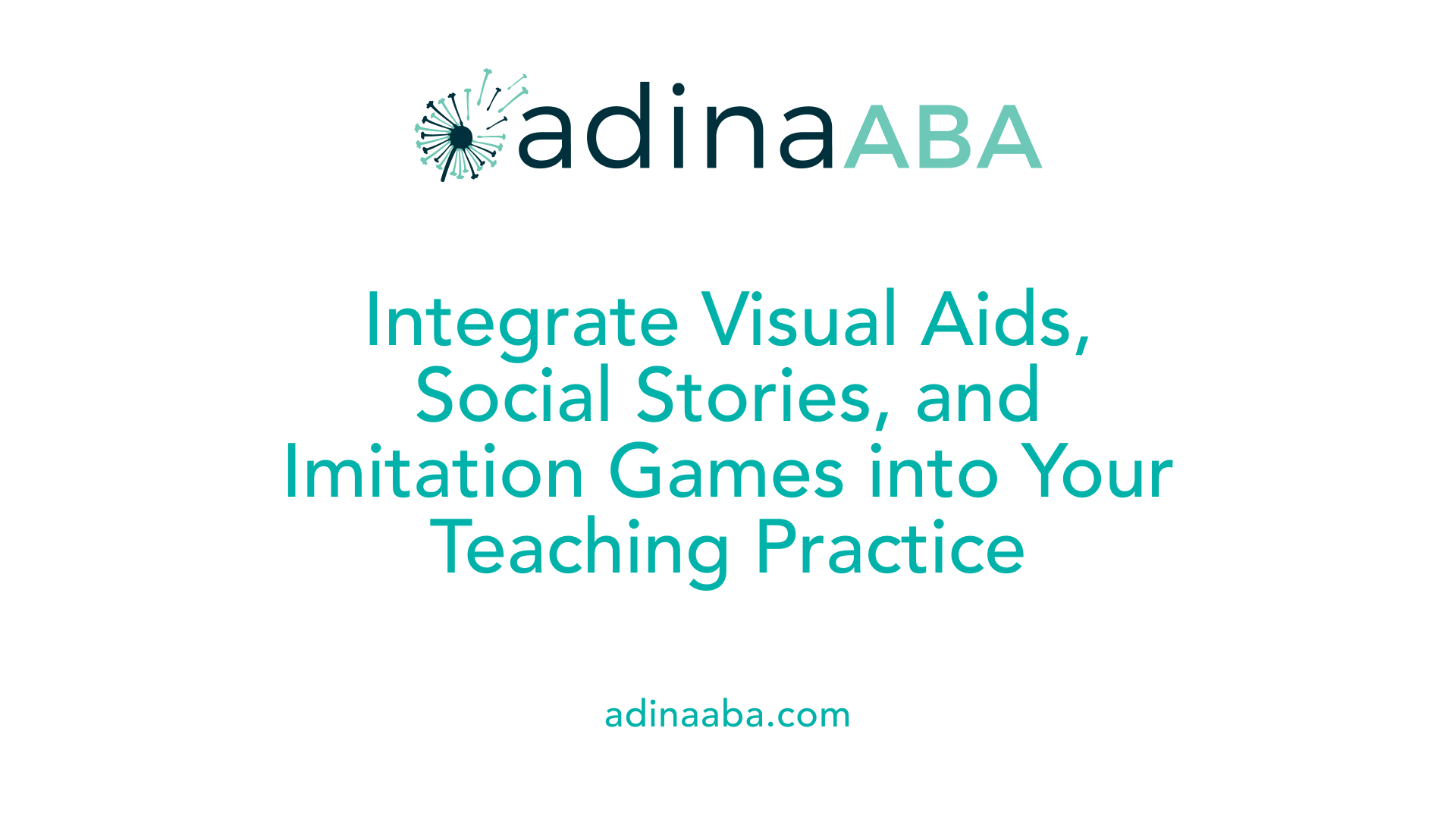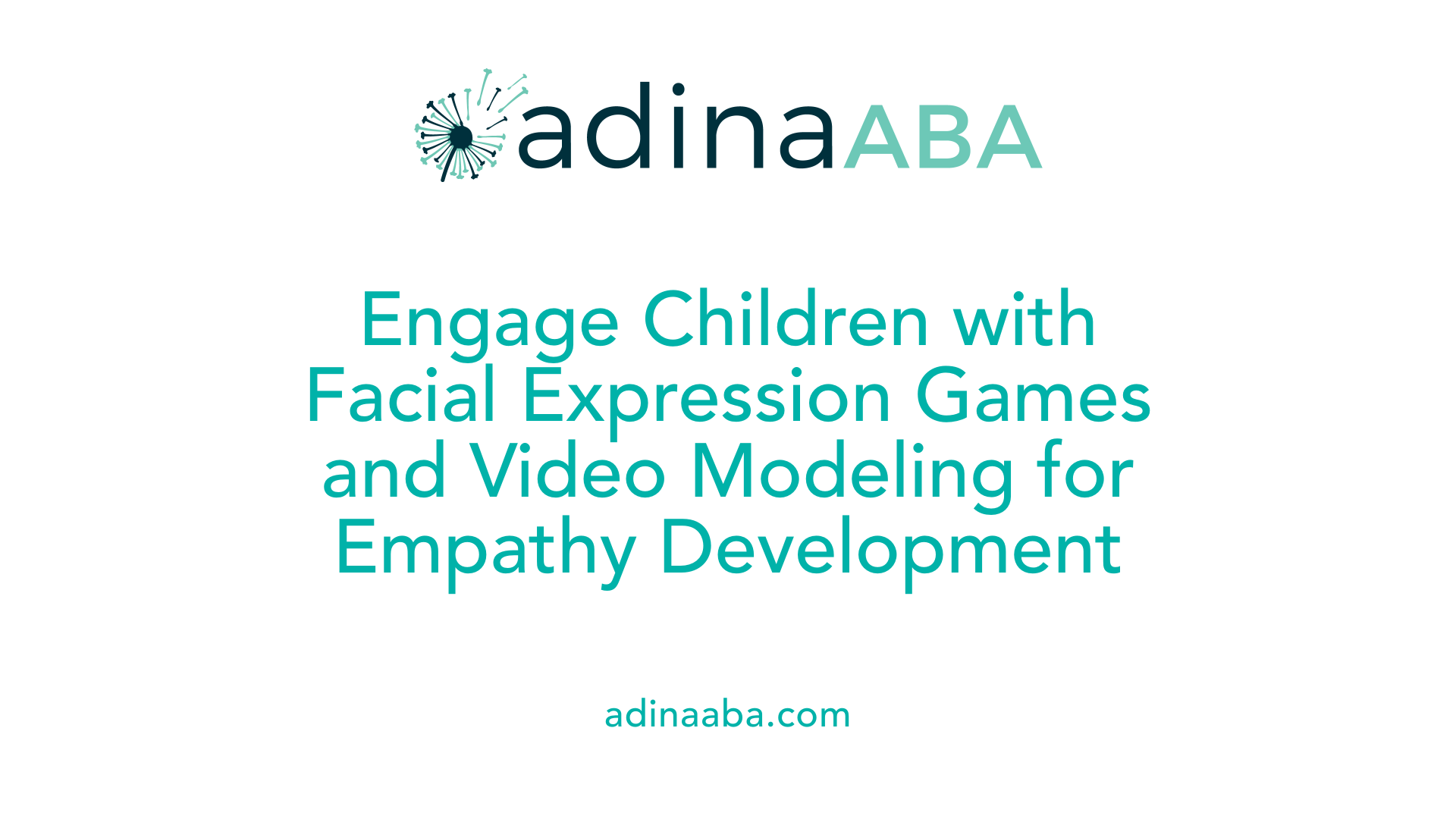Teaching perspective-taking to children with autism

Understanding and Developing Perspective-Taking Skills in Autism
Perspective-taking—the ability to understand others’ thoughts, feelings, motives, and social cues—is fundamental to social interactions and relationships. For children with autism, developing these skills can be particularly challenging but also profoundly impactful. This article explores effective strategies, research findings, developmental insights, and practical tools to support children on the autism spectrum in cultivating authentic and meaningful social understanding.
Effective Strategies and Methods for Teaching Perspective-Taking

What are effective strategies and methods for teaching perspective-taking to children with autism?
Teaching children with autism to understand and interpret others' perspectives involves a mix of visual, verbal, and interactive approaches.
One foundational method is the use of visual aids. Posters, flashcards, or pictorial books showing facial expressions and emotions help children recognize and describe feelings. For example, visual supports like posters of happy, sad, angry, and surprised faces serve as reference points during lessons. Activities like 'Pass the Face,' where children imitate and identify facial expressions linked to specific emotions, reinforce their ability to connect expressions with feelings.
Story-based prompts and literature are also powerful tools. Reading children’s books that depict characters with diverse emotions, such as 'One Frog Too Many' or social stories, encourages discussion about feelings and motives. Teachers can ask questions like, 'What do you think the character is feeling?' or 'Why do you think they said that?' to foster empathy. Stressing words that describe thoughts and feelings throughout the story encourages children to relate characters’ emotions to real-life situations.
Interactive techniques such as role-playing and video modeling are highly effective. Role-playing allows children to act out social scenarios, practicing recognizing and responding appropriately to social cues. Video modeling showcases peers or adults demonstrating desired behaviors, which children can imitate and learn from. Reinforcement—like praise or tokens—when children correctly identify emotions or respond socially correct strengthens these behaviors.
Supporting authentic social understanding means shifting focus from superficial scripting to deeper comprehension. Promoting acceptance of social differences and encouraging perspective seeking over conformity nurtures genuine interactions. Strategies that help children describe their perceptions, motives, and reactions, rather than force a neurotypical script, empower them to communicate more authentically.
Teaching emotional labeling—helping children identify and name emotions—is a fundamental part of perspective-taking. Using tools such as emotion cards or emotion-guessing games helps children connect facial cues with feelings. This skill lays the groundwork for understanding complex social interactions and responding empathetically.
In summary, combining visual aids, story-based discussions, role-playing, video modeling, emotional labeling, and promoting social acceptance constitutes an effective approach to developing perspective-taking in children with autism. These methods foster genuine understanding, emotional awareness, and social competence, forming a comprehensive pathway to improving their social interactions.
Impact of Teaching Perspective-Taking on Social Skills Development
How does teaching perspective-taking impact social skills development in children with autism?
Teaching perspective-taking plays a vital role in enhancing social skills for children with autism. When children learn to understand and interpret others' thoughts, feelings, and motives, they become better equipped to respond appropriately in social situations.
Research shows that direct teaching of applied social responses—such as describing others' emotions, understanding motives, and predicting reactions—leads to meaningful improvements in social behaviors. Unlike training that focuses solely on developing theory of mind or understanding deictic frames (speaker perspective), applied perspective-taking directly influences how children engage socially.
These targeted interventions encourage genuine interactions based on empathy rather than rote or masked behaviors that can cause stress and diminish self-esteem. When children recognize social cues and appreciate diverse perspectives, they tend to interact more authentically, fostering better relationships and social confidence.
Programs incorporating activities like storytelling, role-playing, and visual supports help children generalize these skills across different settings, promoting autonomous social engagement. Importantly, developing perspective-taking supports self-advocacy, helping children articulate their needs and understand others better.
While current evidence affirms the benefits of perspective-taking training, it also highlights the importance of tailored, rigorous approaches. Ongoing research continues to refine effective strategies to foster social competence, emphasizing that understanding others' perspectives is fundamental for meaningful, adaptive social interaction in children with autism.
Research and Evidence-Based Practices for Teaching Perspective-Taking
What evidence-based practices and research findings support teaching perspective-taking in children with autism?
Research indicates that effective methods for teaching perspective-taking focus on fostering interest, curiosity, and reciprocal understanding rather than simply teaching children to imitate or adopt others' viewpoints. Techniques that are interactive, visual, and reinforced through engaging activities have shown significant promise.
Video modeling, role-playing, and social narratives are practical strategies that help children understand emotional and social cues. For example, using storybooks like 'One Frog Too Many' with prompts about characters' feelings encourages children to consider others' perspectives.
Empirical studies involving group training sessions demonstrate that children with high-functioning autism can improve in understanding others' thoughts and feelings. These sessions often include dramatizations, story discussions, and visual tasks, leading to observable gains in prosocial behaviors such as sharing and helping.
However, recent insights from developmental and behavior-analytic literature highlight that solely teaching about mental states, like false beliefs or deictic frames, is insufficient for real-world social skills. Instead, fostering genuine social responses—such as empathic helping or providing listener-appropriate details—has proven more effective.
Moreover, a shift toward accepting neurodiversity is essential. Educating neurotypical peers and adults about autism and encouraging acceptance reduces the pressure to mask or conform to neurotypical norms, which can harm mental health.
The double-empathy problem underscores that mutual understanding in social interactions benefits from curiosity and mutual respect, rather than unidirectional efforts to 'teach' empathy in autistic children. Promoting a culture of curiosity, genuine interest, and respect enhances meaningful social connections.
In summary, intervention strategies that combine visual supports, interactive activities, and a respectful understanding of neurodiversity are supported by current research to promote better perspective-taking. These methods aim to empower autistic children to navigate social worlds authentically while fostering acceptance and reducing stigma.
The Developmental and Theoretical Foundation of Perspective-Taking in Autism
Understanding how perspective-taking develops and its importance in autism requires examining both developmental stages and theoretical models. In typically developing children, perspective-taking progresses through recognizable phases. Initially, young children develop visual perspective-taking (VPT), where they learn that others may see different physical views of an object or scene. This development occurs around ages 2 to 3, progressing from simple awareness of others' viewpoints (VPT1) to more complex understanding (VPT2). As children mature, they acquire the ability to understand others' thoughts, feelings, and social motives—this is the foundation of more advanced, conceptual perspective-taking.
In children with autism, these developmental pathways often differ. They tend to struggle with higher-level social and cognitive perspective-taking, such as understanding others' beliefs or intentions, though they might recognize visual perspectives better. The key for interventions is in tailoring teaching methods to these developmental differences.
Theoretical frameworks underpin the emphasis on social understanding. They highlight that teaching perspective-taking should focus on specific social behaviors like empathizing, sharing motives, or providing listener-appropriate details, instead of only aiming for abstract cognitive tasks like false belief tests. Empirical evidence suggests that naturalistic teaching strategies—such as storytelling, role-playing, and group activities—are most effective. These methods promote social skills directly linked to daily interactions, rather than just developing cognitive awareness.
Understanding and fostering perspective-taking is essential because it supports broader social competence. Improving these skills boosts prosocial behaviors, like helping and sharing, which are critical in building relationships and navigating social environments. Recognizing the diversity within the autism spectrum is crucial, as some individuals develop these skills earlier or more readily than others. Tailoring interventions to individual developmental levels enhances their effectiveness.
Research highlights the importance of pragmatic social understanding—being able to see the world from others’ points of view—not just as a cognitive exercise but as a means to achieve empathetic and authentic communication. This approach aligns with the core principles of supporting neurodiverse individuals, promoting acceptance, and respecting natural variations in social cognition.
Resources, Activities, and Tools to Support Perspective-Taking

What resources, activities, and tools can facilitate the development of perspective-taking skills in children with autism?
Supporting children with autism in developing perspective-taking skills involves a variety of targeted resources and activities. Visual supports are essential; pictorial aids such as posters or flashcards depicting facial expressions help children learn to recognize emotions accurately.
Engaging in role-playing exercises allows children to practice interpreting others’ feelings and motives in a safe, simulated environment. Reading children’s books and social narratives that include prompts about characters' thoughts and emotions encourages children to analyze and understand different perspectives.
Specific games like 'Pass the Face' promote imitation and recognition of facial expressions linked to various emotions, which is a foundational social skill. These activities are supported by research indicating that imitating facial expressions can activate neural responses tied to understanding emotions.
Tools such as the 'Sally-Anne Test' serve as assessment instruments for theory of mind, helping to identify a child's current perspective-taking abilities. Naturalistic interventions, including video modeling—where children imitate social scenarios presented on video—and structured social stories, further enhance understanding.
By combining visual aids, interactive activities, storytelling, and assessment tools tailored to individual needs, caregivers and educators can foster greater social awareness and empathy. This multi-faceted approach helps children with autism navigate social interactions more effectively and promotes meaningful interpersonal connections.
| Resource/Activity | Purpose | Implementation Example |
|---|---|---|
| Social stories | Explain social situations from multiple perspectives | Read stories describing characters’ thoughts and feelings |
| Facial expression posters | Recognize emotions | Match facial expressions to emotions in matching games |
| 'Pass the Face' game | Imitate and identify facial expressions | Children imitate expressions linked to emotions |
| Video modeling | Practice social responses | Watch and imitate social scenarios on video |
| Children’s literature | Develop understanding of characters | Read and discuss stories focusing on emotions |
Implementing Strategies: Practical Tips for Caregivers and Educators
To foster perspective-taking in children with autism, practical, tailored approaches are vital. Visual supports such as posters of facial expressions and social stories help children recognize and interpret emotions, laying a foundation for emotional understanding.
Structured activities like sorting facial expressions into categories or engaging with children’s literature using prompts about characters’ thoughts and feelings encourage active learning. Games such as 'Pass the Face' involve imitation and recognition, making the learning process engaging and interactive.
Modeling appropriate social responses and using social scripts—phrases like 'I see what you mean'—can guide children in developing their social interactions. These strategies make abstract social concepts more tangible and relatable.
Authentic communication requires supporting self-determination. Allowing children choices about when and how to use their social skills respects their autonomy and promotes genuine social engagement.
Integrating these strategies into daily routines and interactions ensures consistency and relevance. For example, naturalistic teaching—using everyday situations—helps generalize skills beyond structured activities.
In summary, combining visual aids, structured activities, modeling, and respectful support for self-expression creates a comprehensive approach. This promotes meaningful social understanding and skills development, respecting each child’s unique needs and pace.
Towards Inclusive Interactions and Respect for Neurodiversity
Teaching perspective-taking to children with autism is both a developmental necessity and an opportunity for fostering authentic social connections. While traditional approaches have focused on theory of mind or deictic frames, current research and best practices highlight the importance of direct, visual, and naturalistic methods that promote social responsiveness and genuine understanding. Emphasizing neurodiversity and respect for individual differences leads to more meaningful and inclusive social interactions that celebrate the unique perspectives of autistic individuals. As educators, therapists, and caregivers adopt evidence-based strategies—like social stories, role-playing, video modeling, and fostering curiosity—they support children in developing social-cognitive skills essential for lifelong relationships and community integration. Ultimately, this shift from superficial conformity to authentic engagement embodies a compassionate and empowering approach to teaching perspective-taking in autism.
References
- Easy Ways to Teach Perspective Taking to an Autistic Child
- How Teaching Perspective Taking to Individuals with Autism ...
- Theory of Mind and Perspective Taking - How to ABA
- Why Perspective-Taking and Neurodiversity Acceptance? (Part 2 of ...
- Rethinking Perspective-Taking: Insights from an Autistic Psychologist
- Using video modeling and reinforcement to teach perspective-taking ...
- Building Perspective-taking Skills in Autistic Children with One Frog ...
More Resources
Expert Clinicians
Get started today ->


.jpg)
.jpg)
.jpg)

.jpg)